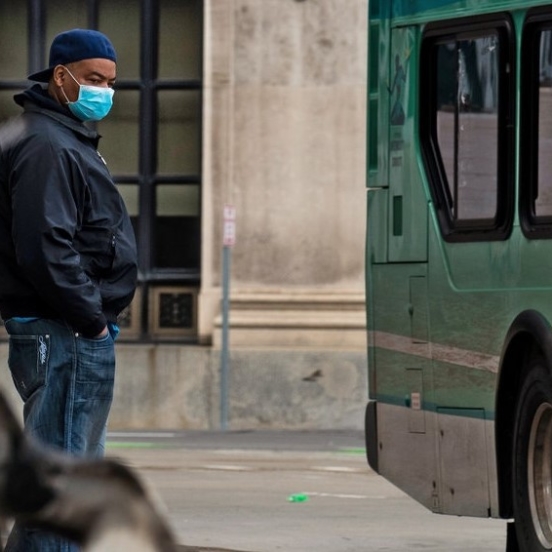Health
A nationwide
study has found that those who have had long-term exposure to air pollution face higher
mortality rates from COVID-19. (The New York Times)Experts warn that forecasted
flooding over the next few months, exacerbated by warming temperatures, could act as a threat multiplier for midwestern states in the U.S. already struggling with COVID-19. (Grist)Emerging
scientific evidence suggests that our vulnerability to
infectious diseases such as COVID-19 increases as humans encroach on wildlife habitats. (The San Francisco Chronicle)
Equity
A new
map tool that indicates
regions of vulnerability to the coronavirus outbreak suggests a correlation between black and low-income communities in disproportionate proximity to industrial facilities and a greater projected risk of severe COVID-19 outcomes. (Grist)
Politics & Economy
Global electric vehicle sales are expected to drop by
43 percent in 2020 as economic impacts from COVID-19 and falling oil prices reduce demand and halt production. (Axios)A new
study found that electricity generation from wind and solar sources outperformed fossil fuels in the first quarter of 2020, with continued
renewable energy growth expected despite COVID-19 impacts. (The New York Times)Republican lawmakers are calling on the federal reserve to ensure that fossil fuel companies, and specifically the
coal industry, are included in a COVID-19 financial relief program. (Bloomberg)Industry groups—including oil and gas, building, agriculture and transportation—are asking state officials to delay or modify California’s
pollution limits, citing economic strains from COVID-19. (HuffPost)
Action
Democratic senators are calling on the EPA to suspend Trump-era rules that would degrade
air quality and exacerbate the COVID-19 health crisis. (The Hill)New York has announced new legislation to advance the state’s clean power plans and promote
renewable energy as a driver for economic recovery from COVID-19. (Clean Technica)Danish Finance Minister Nicolai Wammen announced that the country will prioritize
climate ambitions and strive for a “green recovery” from the economic impacts of COVID-19. (Reuters)Amsterdam will embrace the so-called doughnut model—which attempts to balance the needs of people without harming the environment—to ensure its
sustainable recovery from COVID-19. (Quartz)
Kicker
Want to teach your kids about climate change while they’re at home? Check out these free
lesson plans.

